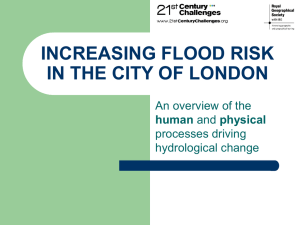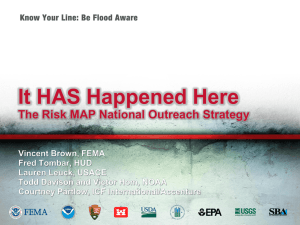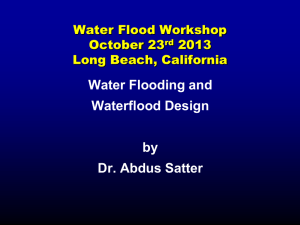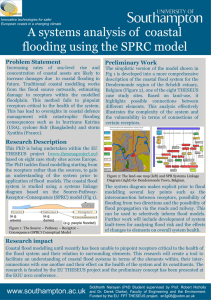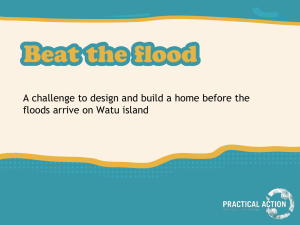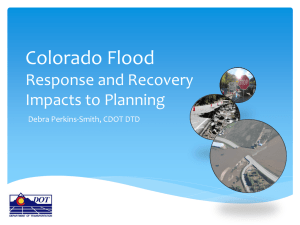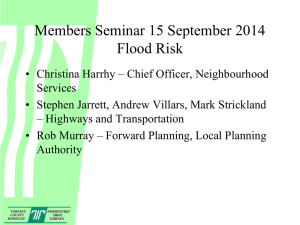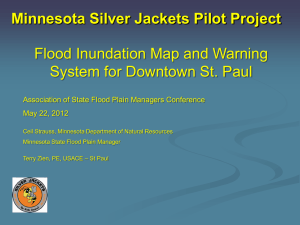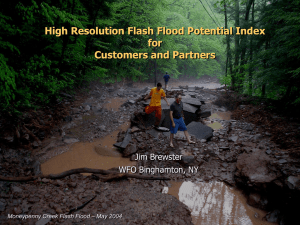Environment Agency - Suffolk Resilience
advertisement
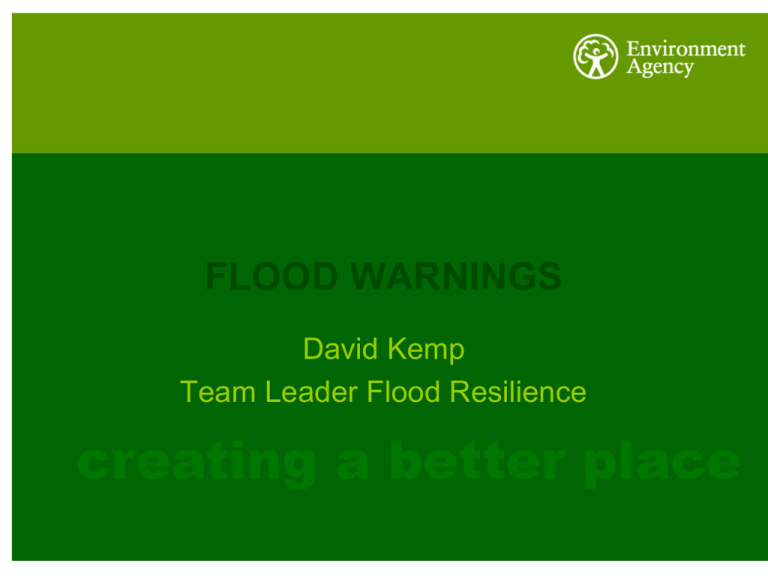
FLOOD WARNINGS David Kemp Team Leader Flood Resilience FLOOD WARNING SERVICE • • • Environment Agency provides a FW service for the whole of England and Wales, including Suffolk My team, based in Ipswich, covers from Hunstanton to Purfleet and all the rivers therein. My colleague Adam Foster and his team in Brampton cover the west of the county Our Aim • • • • The service aims to provide 2 hours prior notice of flooding from main rivers or 12 hours prior to flooding from the sea. We warn of flooding from fluvial and tidal sources. The warnings are the same but the timescale and mechanisms are different The intention is to give everyone the opportunity to take appropriate action that will limit the impact of flooding We can not warn of flooding from sewers, burst water mains, or surface water flooding. Flood Warning Icons • • • Stay Alert Stay vigilant Early precautions Flooding expected Take action Protect yourselves & your property Significant risk to life Significant risk to communities Protect yourselves Issuing a Flood Warning • Forecasting • Targeting • Dissemination Forecasting • • • • • • A subject in itself For fluvial flooding we utilise weather radar, rain gauges and river gauges to give 2 hours notice of flooding. For tidal flooding gauges are too late and the latest computer models are used to predict the tide height. 2 – 5 days ahead, probabilistic forecasts Deterministic from 36 hours Every 12 or 6 hours Targeting • • • Dependant on levels (forecast or actual) we will issue a Flood Alert, Flood Warning or Severe Flood Warning We are able to target the specific locations that will flood rather than stretches of coastline. Thus reducing false warnings and allowing the emergency services to target their resources Tidal Warnings • • • Issued entirely with reference to forecast Timescales range from 6 hours to 24 hours It is NOT a sequential system – we issue the calculated warning level Fluvial Warnings • • • Are issued sequentially Lead times 2-4 hours. Assume 2 hours Unlikely to see a Severe Flood Warning – although we have the capability to do so everywhere. WHO DO WE WARN? • • • • • Those registered for our service Those who did not opt- out Members of the public within the flood plain property owners within the flood plain Professional Partners • County &Local Councils • Blue light services • Media How do we warn people? • • • • • Principal method is to warn people by our automatic telephone message - FLOODLINE WARNINGS DIRECT Up to 5 numbers - can be mobile numbers Text messages faxes Emails Basic Parameters • AVM 2005 30 telephone lines FWD 2006 450 telephone lines FWD 2008 900 telephone lines FWD 2010 1200 telephone lines FWD 2012 1400 telephone lines • Over a million properties receive our free service • • • • • Website • www. Environment-agency.gov.uk • In 2007 was able to manage 100,000 hits per hour. In 2012 we can manage 2,400,000 hits per hour. • • Now in the process of revamping the site. Floodline • • • • • • • 0845 9 88 11 88 One stop shop for interrogating the system either via quickdial or via operators. Reporting flooding Flood advice and literature Registering for the system Up to 542 trained staff at 4 sites across the UK Over 10 times the number in 2007 (43) What Next? • • • • Find out if you are in a flood plain Sign up for flood warnings Consider a flood plan Exercise the flood plan New Flood Warning Icons • • • Stay Alert Stay vigilant Early precautions Flooding expected Take action Significant risk to life Significant risk to communities

